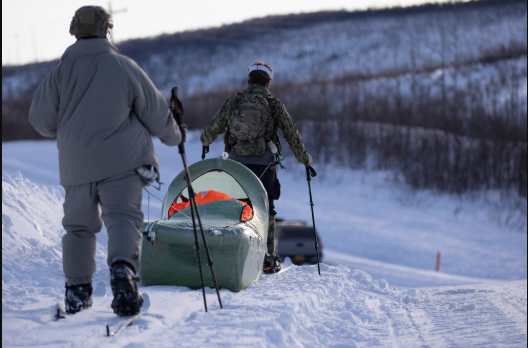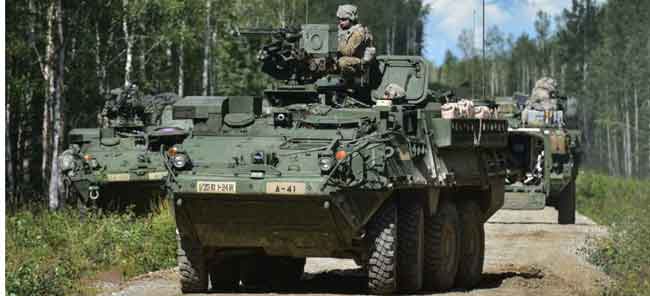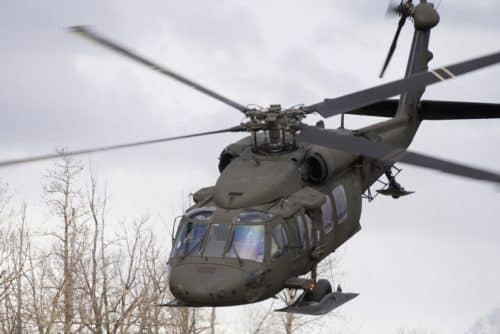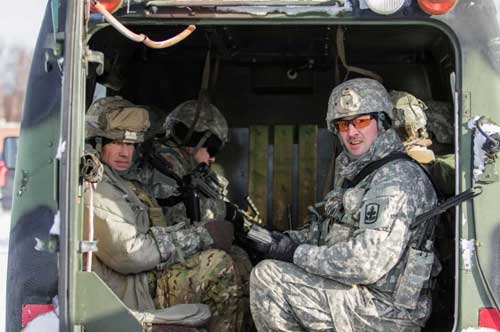
JOINT BASE ELMENDORF-RICHARDSON, Alaska — Alaska Army National Guard Staff Sgt. Jeffrey Conner, a member of the 297th Infantry Battalion medical platoon, participated in Arctic Eagle 2020 at the search and extraction mass casualty simulation venue at Fort Wainwright, Alaska, Feb. 25.
At this venue, military members from the Marine Corps, Air Force, Army, Air National Guard, Army National Guard and civilian emergency response agencies such as the Federal Emergency Management Agency worked together throughout the three-day event to assess damages of a hypothetical helicopter crash scenario, as well as search for, decontaminate, treat and transport casualties of the crash.
Conner’s role in the event was in the medical portion as a facilitator of ambulance transport for the casualties to Bassett Army Community Hospital and Fairbanks Memorial Hospital as appropriate. He was present as a member of the 297th IN BN medical platoon, but he is also a full-time emergency responder as a civilian.
“I’m the fire chief at Ester Volunteer Fire Department,” said Conner.
He has been with Ester Volunteer Fire Department since July of 2019. Prior to that he worked at Fairbanks Fire Department for 25 years and the Seattle Fire Department for five years before that.
Conner has served in the military for 16 years, but did not start as an Army Guardsman.
In 2004, on his 40th birthday, Conner joined the Navy Reserves as a hospital corpsman with the Marine Forces Reserve, 4th Reconnaissance Battalion, which he deployed to Iraq with. After six years, he transitioned to the Alaska Army National Guard and has served as a combat medic since then.
[content id=”79272″]
“I wanted to get in because of the Iraq war,” he said. “I really just wanted to help out.”
Conner chose a military path that aligned with his civilian career because he enjoys the teamwork aspect of emergency response with the end goal of helping people.

An example of this teamwork was portrayed when Chena Goldstream Fire and Rescue provided an ambulance for the search and extraction training after the military ambulance broke down.
“Chena Goldstream is our partner at Ester,” he said. “That’s why, when I asked them, they agreed to participate in this drill and provide their ambulance on short notice.”
Conner pointed out that his fire department is a trained first responder unit but does not have ambulances, which is why he was grateful for Chena Goldstream’s help.
Although the training is a mass casualty simulation, it can be applied to other areas of emergency response as well.
“I would say the big takeaway from this is that all of these different units are working together, and that’s probably the biggest part of it,” he said. “We can end up working with these agencies in a real-life situation for a number of different reasons; that’s why this training is so important.”
Conner enjoys overcoming the challenges and adversity he faces as an emergency responder.
“There’s an element of objective hazard,” he said. “In emergencies, you have to function as a team, and you have to utilize your skills in what are very stressful environments, just like combat.”
###








